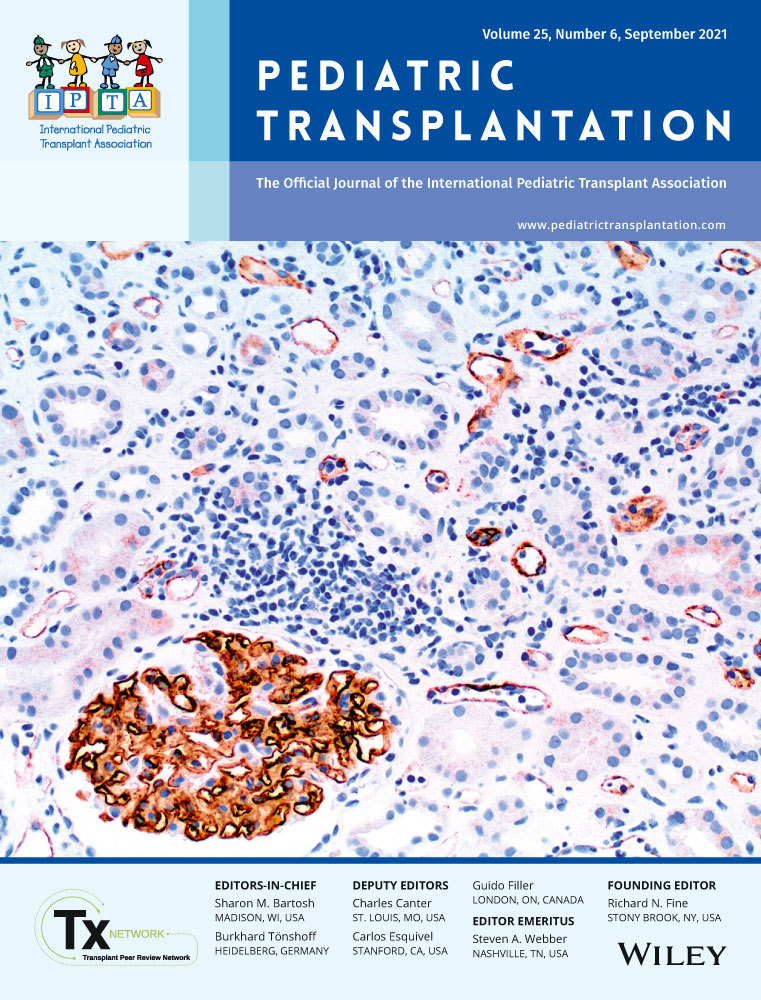Biliary and duodenal complications after « en bloc» liver-small bowel transplantation in children. A single center cohort study
Erik Hervieux and Carmen Capito participated equally to this work.
Florence Lacaille and Christophe Chardot share the design of this work.
Abstract
Background
The technique of « en bloc» liver and small bowel transplantation (L-BT) spares a biliary anastomosis, but does not protect against biliary complications. We analyze biliary and duodenal complications (BDC) in our pediatric series.
Methods
Between 1994 and 2020, 54 L-BT were performed in 53 children. The procurement technique included in situ vascular dissection and pancreatic reduction to the head until 2009 (group A). Thereafter, the whole pancreas was recovered (group B).
Results
Nine BDCs occurred in 8/53 (15%) patients (7 in group A and 1 in group B): leak of the donor's duodenal stump (2), stenosis of the extra-pancreatic bile duct (5), and intra-pancreatic bile duct stenosis (2). Median delay for diagnosis of stricture was 8 months (4–168). Interventional radiology was successful in one child only, the others required reoperations. Two patients died, of biliary cirrhosis or cholangitis, 15-month and 12-year post-L-BT. One was listed and liver re-transplanted 13 years post-L-BT. At last follow-up, two patients only had normal liver tests and ultrasound.
Conclusion
BDC after L-BT can cause severe morbidities. Pancreatic reduction might increase this risk. Early surgical complications or chronic pancreatic rejection might be co-factors. Early diagnosis and treatment are key to the long-term prognosis.
CONFLICT OF INTEREST
No authors have direct or indirect commercial financial incentive associated with publishing the article.
Open Research
DATA AVAILABILITY STATEMENT
The data that support the findings of this study are available from the corresponding author upon reasonable request.




